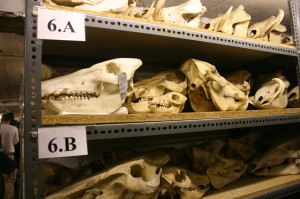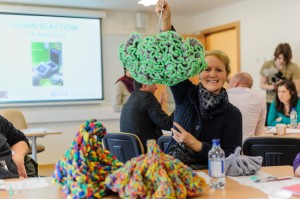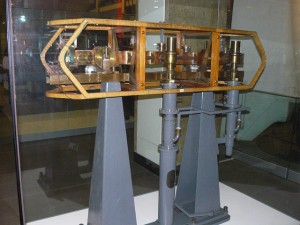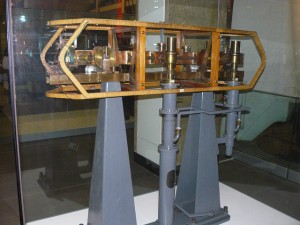On the Wings of White-Heat It may appear an unsightly cross between a Mark I Mini and a set of metallic wardrobes, but within its architecture the Ferranti Pegasus heralds the birth of something which continues to alter the lives of millions – this writer at this moment included – in the 21st century: desktop …
Tag: Science
Jul 18
Kent students create an international presence for local treasures
The Powell Cotton family were explorers, soldiers, women, anthropologists, naturalists, film-makers and more. Their astonishing archives and collection form the core of the Powell Cotton Museum (PCM) in its country park, and include the world’s largest elephant specimen and the first room-sized habitat-display diorama (a form of exhibit best known through the examples at the …
Jul 18
Officer! I moustache you a question: The Science of Selecting Soldiers in WWII
Which type of fine- follicled fellow would you pick to be an officer: trimmed, divided, clipped, line or bushy? Wartime researcher G.R. Perberdy gave the matter considerable thought, compiling data on the facial hair of hundreds of participants – whom he helpfully notes were male – that went through the War Office Selection Boards (WOSBs) …
May 08
Chain Reaction! Workshop 2
The second workshop of the Chain Reaction! project took place on 18 April 2013. We spent the day in the nice new Colyer-Fergusson Music building at the University of Kent, a fittingly creative space in which to have artists discussing their practice. The workshop was thoughtfully planned and run by Caterina Albano of Artakt and …
Oct 25
Chain Reaction! video posted on YouTube
The film maker Mike Bellinger has posted his promo for Chain Reaction! on YouTube. Click to view and enjoy Steven Shapin and Bruno Latour set to video game-style electronica. Thanks, Mike!
Aug 29
Torches of Freedom, or the self-perpetuating promotional power of science
Wake up people! Politicians and corporations are manipulating us. And they’re using all the sophistication of science to do it. Thus is the general tenor of a recent wave of internet news articles and blog entries, illustrating the hidden machinations of the shadowy figures who ‘really’ control our lives. And though the claims made in …
Aug 24
Big Science and the Atomic Clock
Modern Times means Modern Time! Don’t trust the Earth, trust the Atom! This was the first successful atomic clock. In 1955, when it was developed, it proved more accurate than any other time keeper in the world. The use of stable vibrations of caesium atoms at a time standard was first proposed by the physicist …
Aug 21
“‘The dentist will see you now’ – Dental unit fills hole in new health service”
The Dental Manufacturing Company Dental Unit, 1945-55 In July 1948, the NHS was opened by Labour health minister Bevan, making dental treatment available to the whole population, free of charge, for the first time. This sudden expansion of treatment meant that, at first, there was a shortage of specialist dental equipment. The Dental Manufacturing created, …
Aug 10
Technology in Everyday Life c.1939-1968
From prams and washing machines to radios and vacuum cleaners, this display of items from the 1951 Festival of Britain is clearly domestically centred. Here, science and technology appear to impinge on almost every aspect of day-to-day British life with items for entertainment (games, fireworks and broadcasting technologies), beauty (hair styling and clothes tailoring), cleaning …
Jul 18
The birth of Chain Reaction!
Beginning a Chain Reaction! Chain Reaction! is an attempt to do some creative science communication in a way that embodies approaches taken by historians of science. On a simple level, it celebrates a piece of laboratory kit the Polymerase Chain Reaction (PCR) machine, which is 30 years old in 2013. By rapidly multiplying fragments of …
- 1
- 2






Recent Comments